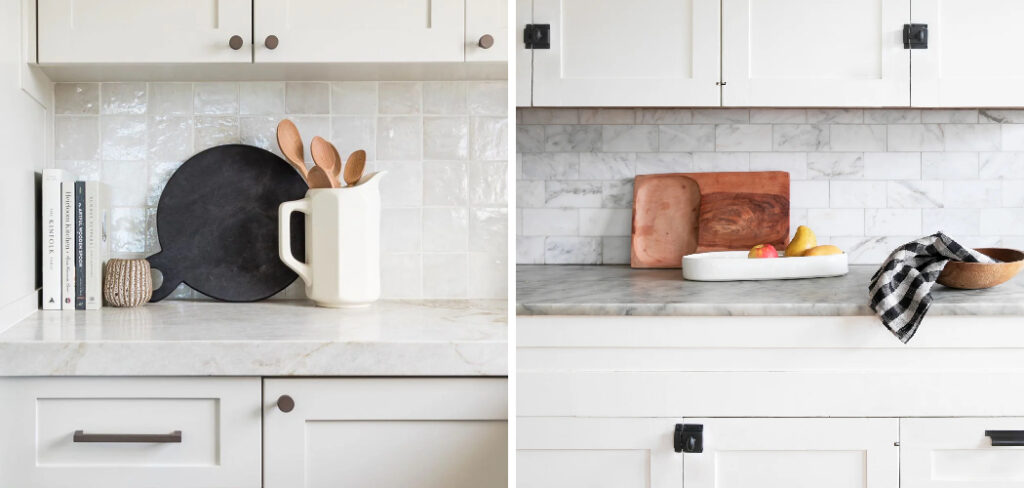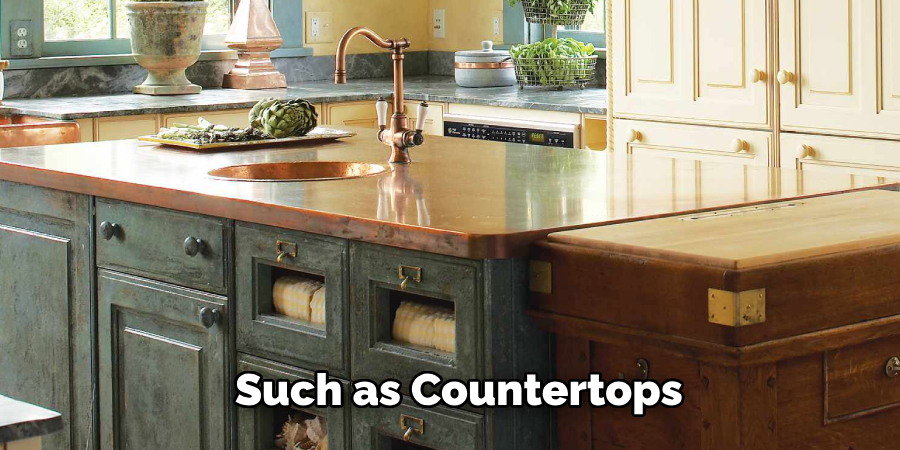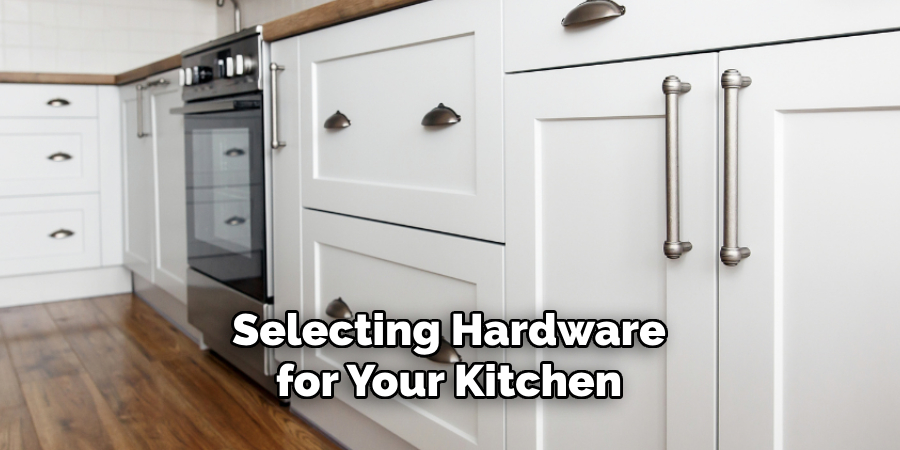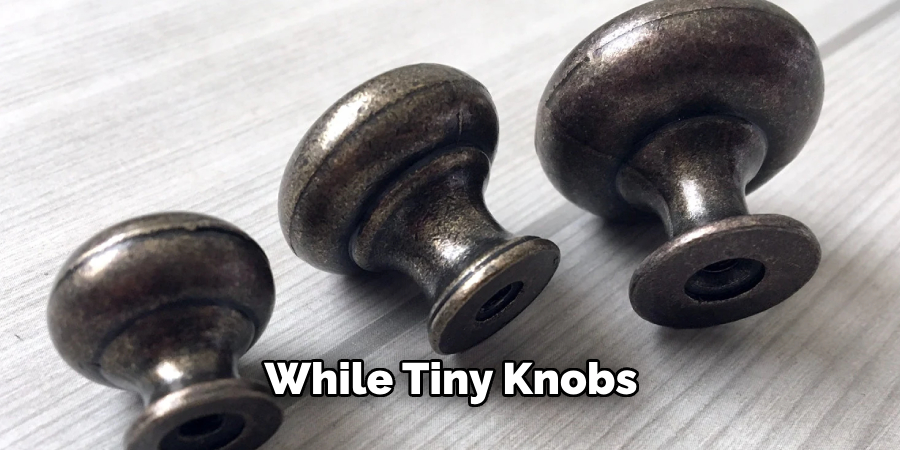Are you tired of your old kitchen cabinets? Are you thinking about renovating your kitchen with new and improved cabinets? Well, choosing the proper hardware for your kitchen cabinets is key to making them look stylish and function smoothly.

How to choose hardware for kitchen cabinets is a crucial step in enhancing both the functionality and aesthetic of your cooking space. With countless options available, from handles and knobs to hinges and drawer slides, this selection process can feel overwhelming.
The ideal hardware complements your kitchen design and contributes to ease of use and durability.
In this guide, we will explore key factors to consider when selecting hardware, including style, materials, finish, and functionality, ensuring that you make informed choices that elevate your kitchen’s appeal and practicality.
What Will You Need?
Before diving into the details of hardware selection, it is essential to understand what you need for your kitchen cabinet upgrade. This will help narrow down your options and simplify the decision-making process.
- Measurements: First and foremost, you should measure all the cabinet doors and drawers in your kitchen. Knowing these dimensions will ensure your selected hardware fits perfectly and does not hinder its functionality.
- Style Inspiration: Browse design magazines or visit home improvement stores to get inspiration for the hardware you want in your kitchen. It can be helpful to clearly understand whether you prefer traditional, modern, or transitional styles before purchasing.
- Budget: Hardware can range from a few dollars to hundreds of dollars, so having a budget in mind is essential. This will help you narrow your choices and avoid overspending on items that may not be necessary for your kitchen.
Once you have these three essential elements in mind, it’s time to move on to the selection process.
10 Easy Steps on How to Choose Hardware for Kitchen Cabinets
Step 1. Determine Your Style

Begin by identifying the overall style you wish to achieve in your kitchen. Whether you lean towards a farmhouse, contemporary, or classic aesthetic, your hardware should reflect and enhance this design choice. To ensure a cohesive look, look for inspiration in existing elements, such as countertops, cabinetry, and flooring.
Additionally, consider the scale and proportion of the hardware in relation to your cabinets; more giant knobs and pulls can make a bold statement, while smaller ones might provide a more subtle touch.
Step 2. Choose the Right Materials
The materials you select for your cabinet hardware can significantly influence your kitchen’s style and durability. Consider options such as stainless steel, brass, bronze, or ceramic, each offering a distinct look and feel.
Stainless steel is modern and often corrosion-resistant, making it ideal for busy kitchens, while brass can lend a warm, vintage charm. If you’re aiming for a rustic appeal, distressed finishes or wrought iron may be an excellent choice. Ensure the material complements your kitchen’s aesthetic, stands up to daily use, and matches the overall vibe you want to create.
Step 3. Select the Finish
The finish of your cabinet hardware is another crucial aspect that can significantly impact your kitchen’s overall appearance. Popular finishes include polished, brushed, and antique styles, each providing a different level of shine and texture.
A polished finish can add a sleek and contemporary look, while a brushed finish offers a more understated, matte appearance that is excellent for hiding fingerprints and smudges. Antique finishes can infuse character and depth, perfect for traditional or vintage-inspired kitchens. When choosing a finish, consider how it harmonizes with other elements in your kitchen, such as appliances and fixtures, to ensure a cohesive aesthetic.
Step 4. Assess Functionality

Functionality is paramount when selecting hardware for your kitchen cabinets. Consider how often you’ll use each cabinet or drawer and choose hardware that facilitates easy access. For heavy-use drawers, opt for larger pulls that provide a solid grip, while lighter-duty cabinets may work well with smaller knobs.
Additionally, pay attention to the ease of installation; some hardware may require more complicated mounting than others. Beyond the aesthetics, ensuring that your chosen hardware is user-friendly is essential for maintaining a smoothly functioning kitchen.
Step 5. Match with Cabinet Style
Next, consider how the hardware will align with your cabinet style. Floating shelves, shaker doors, or modern slab fronts may each require different hardware styles to enhance their features. For example, sleek, minimalist pulls pair well with contemporary slab cabinets, while ornate knobs may be a better fit for more traditional raised-panel doors.
Take into account details like the cabinet door thickness, as this can also affect the type of hardware you can choose. Ensuring that your hardware complements the cabinet style allows for a harmonious and unified look in your kitchen.
Step 6. Consider the Ergonomics
When choosing hardware, it’s essential to factor in ergonomics to enhance your kitchen’s comfort and ease of use. Opt for hardware that feels good in hand and is easy to grip, especially for those with limited dexterity or strength. Look for pulls and knobs with smooth edges that won’t dig into your fingers during operation.
Additionally, ensure that the placement of the hardware is accessible enough for family members of all ages, including children and seniors. By prioritizing ergonomic designs, you will create a kitchen that is not only stylish but also user-friendly for everyone.
Step 7. Test for Scale and Proportion
Before finalizing your hardware selection, testing the scale and proportion of the pieces against your cabinets is crucial. Hold or place your chosen knobs and pulls in various locations to see how they interact with the cabinet size and the surrounding elements.

A piece that looks stunning on its own may not work as well in context. For instance, over-sized hardware can make smaller cabinets seem dwarfed, while tiny knobs on larger doors may get lost visually. Ensuring that the scale is appropriate contributes to a balanced and aesthetically pleasing kitchen design.
Step 8. Review Maintenance Requirements
Different materials and finishes require varying maintenance levels, which is an essential consideration for long-term satisfaction with your choices. For example, polished finishes may need frequent cleaning to maintain shine, while brushed or matte finishes may better mask fingerprints.
Consider how much effort you will invest in upkeep, especially in a busy kitchen environment. Selecting hardware that aligns with your maintenance expectations will help keep your kitchen looking its best without excessive effort.
Step 9. Explore Unique Designs
Don’t shy away from exploring unique or custom hardware designs that can add an extra touch of personality to your kitchen. Whether it’s handmade pieces that reflect craftsmanship or modern, geometric shapes that challenge the norm, unique hardware can serve as a focal point. Take the time to browse artisan shops or online marketplaces that specialize in distinctive designs.
This could be an opportunity to find a conversation starter that makes your kitchen feel unique and reflects your taste.
Step 10. Finalize Your Selection
Once you’ve considered all the previous steps, it’s time to finalize your hardware selection. Review all your options based on style, materials, functionality, and maintenance requirements.
Make sure that the choices resonate with your aesthetic and align with your lifestyle and practical needs. Gather a few samples to see how they look within your kitchen environment before making a final purchase. This final step will help ensure the hardware complements your kitchen design, enriching the overall space for years.
By following these ten steps, you can confidently select the perfect hardware for your kitchen cabinets that enhances its functionality and adds a touch of style and personality.
5 Things You Should Avoid

- Ignoring Scale: Avoid selecting hardware that is disproportionate to your cabinets. Oversized knobs or pulls can overwhelm smaller cabinetry, while tiny hardware can appear lost on more oversized doors. Continually assess how the size complements the overall design.
- Neglecting Comfort and Usability: Don’t overlook the importance of comfort in hardware choice. Avoid sharp edges or awkward shapes that can be difficult to grip. Be mindful of family members’ needs; hardware should be accessible and easy to use for everyone.
- Choosing Style Over Function: While aesthetics are essential, prioritizing style at the expense of functionality can lead to frustration. Avoid hardware that looks great but doesn’t effectively serve its purpose. Choose designs that enhance both the look and usability of your kitchen.
- Overcomplicating the Design: Avoid opting for overly ornate designs that can clash with the simplicity of your kitchen. A cluttered aesthetic can detract from the space’s beauty. Instead, aim for hardware that enhances the simplicity or sophistication of the overall design.
- Ignoring Maintenance Needs: Don’t forget to consider the maintenance required for the materials and finishes you select. Avoid materials that may require excessive upkeep, especially in a busy kitchen. Choose options that fit your lifestyle and are practical for everyday use .
You can check it out to Seal Kitchen Cabinets
Conclusion
How to choose hardware for kitchen cabinets is a pivotal step in crafting a functional and aesthetically pleasing space.
By carefully considering factors such as style, ergonomics, scale, and maintenance, you can ensure that your choices not only align with your taste but also enhance the overall usability of your kitchen.
Remember to explore unique designs that reflect your personality while avoiding common pitfalls such as neglecting comfort or overcomplicating your selections.
Ultimately, a thoughtful approach to hardware selection will contribute to a harmonious and inviting kitchen environment you and your family can enjoy for years.
Professional Focus
Angela Ervin, a former interior designer turned blogger, specializes in kitchen design and renovations. Through her website, she blends her passion for cooking with design expertise, sharing practical and creative ideas. Known for balancing functionality and beauty, Angela’s insightful content has made her a trusted voice in home design and lifestyle.
About the Author
Angela Ervin, an experienced interior designer and blogger, combines her passion for kitchen renovations with storytelling. Living in Petersburg with her family, she enjoys cooking and testing her projects firsthand. Known for her humor and relatable style, Angela shares creative, functional design insights through her content, making her a trusted voice in home design.
Education History
University: Virginia Commonwealth University
Degree: Bachelor of Fine Arts (BFA) in Interior Design
- Angela’s education at VCU focused on mastering core interior design principles, including spatial planning, color theory, materials selection, and sustainable design practices.
- She gained hands-on experience through studio projects and collaborative design exercises, which honed her ability to create functional and aesthetically pleasing environments.
- Her coursework also emphasized problem-solving and practical applications of design, preparing her for real-world projects like her self-directed kitchen renovations.
- The program’s strong foundation in both technical skills and creative expression shaped Angela’s ability to seamlessly integrate form and function in her work.


